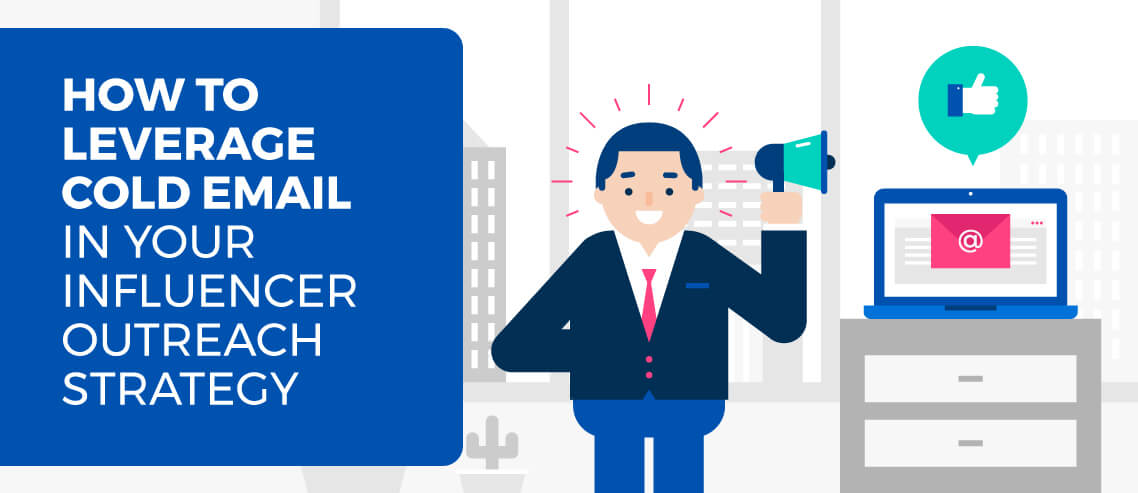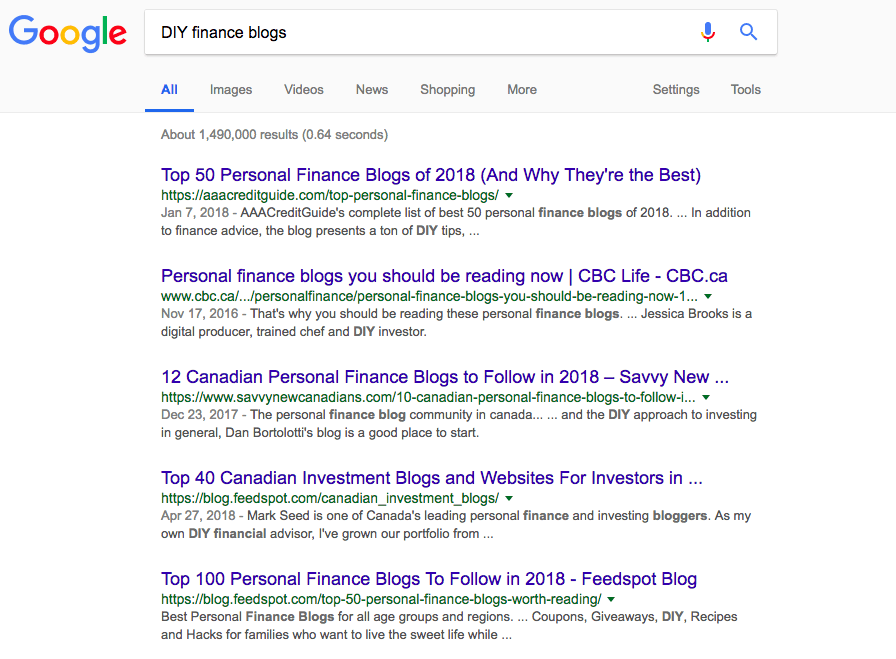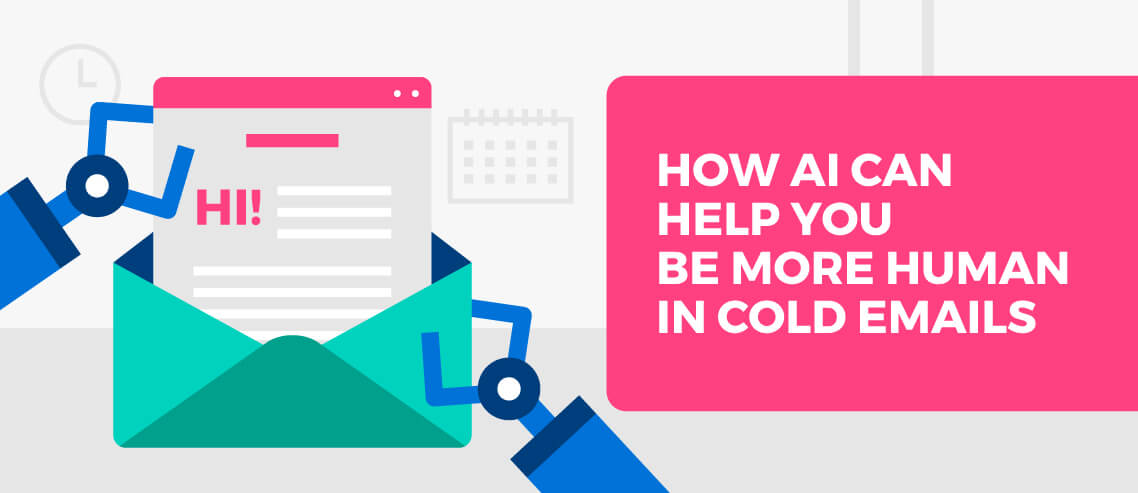How to Leverage Cold Email In Your Influencer Outreach Strategy

Contents
If you’re looking for a way to grab the attention of your ideal buyers, then you need look no further than someone who already has their ear. You need an influencer.
Get them to put in a good word for you, and your chances of success increase exponentially.
Influencers are individuals in a particular industry or niche that have some degree of sway over your potential customers. They’ve already built credibility, trust, and authority, so when they recommend or advocate for a new product, the community reacts in a very positive way. That means more sales, more signups, and more revenue.
It’s not the only way to connect and engage with your target market, of course, but influencer marketing works very well in our modern digital landscape.
The name says it all. Influencers have the prestige to influence their audience … who just happen to be your audience, too.
Influencer Defined
Before we go any further, we need to define what an influencer is and is not. An influencer typically has a big following, creates and shares their own content, has a sizable email list, and enjoys higher-than-average engagement from their community.
They have an audience and a voice.
An influencer may be a traditional celebrity like an athlete, actor, singer, or ‘other’ (Kim Kardashian, I’m looking at you), but they don’t have to be. Many influencers are not famous outside of their own sphere of influence.
In fact, many influencers don’t even have a huge following. Called micro-influencers, they can pack just as powerful a punch.
“More and more, brands are turning to people with far less numbers of followers—sometimes even as low as 8,000—to help share their messages. In return, a brand receives intangible benefits like authenticity, a unique point of view, deeper storytelling and the potential of reaching a more tailored audience.” ~Rebecca Suhrawardi, Fashion Journalist and Forbes Contributor
As long as they have genuine clout and reputation, the actual numbers become relatively unimportant. If their community reacts and responds to their suggestions – do they buy and spend based on what the influencer says? – then the size of the group doesn’t matter.
Besides, who says you have to stop with just one influencer? Influencer marketing can be scaled up or down with ease.
Cold email is a great way to reach out and connect with influencers in your industry, but you’ve got to do it the right way. I’ll give you one guess how many offers they accept when bombarded by messages from people they don’t know asking for a recommendation (hint: zero).
Don’t do that.
Cold Email for Influencer Outreach
Here’s the system I personally use. It works for me, and it can work for you, too.
Step 1: Find the Influencers
Before you reach out, you need to identify the influencers – both big and small – in your industry.
There are several ways you could do this, but I generally like to keep things simple. I start my search with a quick Google query. I Google relevant keywords and phrases followed by ‘influencers,’ ‘communities,’ ‘groups,’ or ‘blogs’ and make a list with a few readily-available metrics like number of followers and publishing schedule.
If I’m looking for influencers in DIY finance, I might Google “DIY finance influencers” or “DIY finance blogs.”
Click a few links, collect a few names, and build your list.

Next, check out their social media profiles for more data. While there, use the platform search in the same way to find platform-specific influencers on Twitter, LinkedIn, Instagram, Facebook, and more.
Use a tool like BuzzSumo to find out who is creating the most-shared content on a given topic or keyword. Look to a service like Brand24 to find the frequency with which they’re mentioned online (the more the better). Try a site like Influence.co to not only find all types of influencers in every industry, but also to run and track your campaign.
Remember that it’s not just about the number of Twitter followers. Medium-sized influencers are often better than the big fish – and easier to work with – while micro-influencers are increasing in value all the time.
You want numbers, yes, but more important is the engagement they generate – likes, comments, share, mentions – and their impact on their community. The best influencers have reach, relevance, and resonance.
Step 2: Follow Them on Social
After generating a list of potential influencers, I like to check out their profiles and follow them on social media.
My reason for doing this is twofold: 1) By scanning and reading the stuff they share with their group, I can get a better understanding of them and whether they’re actually a good fit for my product and audience, and 2) by genuinely getting involved with them in some small way like commenting, liking, or retweeting, I can warm them up even if only slightly.
By following and engaging, they’ll see my name at least a few times. Then, when I get around to the actually outreach, I’m not a complete stranger to them.
Step 3: Reach Out Via Email
After I’ve spent some time on their preferred social media platform or channel, it’s time to reach out and make direct contact.
The key here is to provide value to them, to help them, and to generally make them look good.
I might make a comment or offer a sincere compliment about a recent blog post they’ve written, ask for a short quote for a piece I’m writing (with a promise to send them the link later), share an article or round-up from my blog that mentions their product or website, point out a broken link or small typo on their post, or ask them about an upcoming speaking engagement.

If I do ask for something at this stage, it’s usually a generic “let me know if there’s any way I can help you with X.”
The point is, I’m building a relationship with them before I ask them for anything. Everyone asks them for something. Stand out by offering them something instead. Get their attention.
Research them. Personalize the email. Be genuine and sincere at all times. And follow up if you don’t get a response at first.
Step 4: Nurture and Nourish
Once you get that coveted response, nurture and maintain the relationship for all it’s worth … because it’s worth a lot. It’s a give-and-take situation. Give in the first email or two, then take something in the next one (a guest blogging spot, a product review, or whatever).
Clarify for yourself what kind of relationship you want this to become. Is your ultimate goal for them to be an advocate, user, contributor, cheerleader, reviewer, or something else? Know going in so you can gently move the relationship in that direction.
I recently ran an influencer outreach campaign for Linktexting using this system. The blog is primarily about product management and marketing, so I targeted influencers writing on those topics. For step 3, I wrote an email template – and automated its delivery and follow-up with Mailshake – that included a sincere compliment and comment on my favorite post of theirs, and its impact on me personally. I shared some links to relevant posts I’d written, and my anchor piece was an interview I did with a major industry brand. I eventually asked about guest blogging opportunities on their sites.
It’s often best to delay your ask until later unless you have some level of reputation and clout yourself, though. Give before you take.
Influencer marketing is made for the shift away from traditional marketing and online ads. Consumers are more influenced by recommendations, reviews, and stories from people they trust these days.
So find the people they trust. Engage with them. Reach out via cold email. And nurture the relationship. Their influence can be your gain.
How to use cold email to build your personal brand
Your personal brand is everything. It’s your reputation, how people see you, your value. It’s you, your business, your products…all rolled into one.
Richard Branson has a personal brand. So do Tim Ferriss, Martha Stewart, Gary Vaynerchuk, and Ann Handley.
Do you? Nowadays, if you’re looking for a good job in marketing or tech, a personal brand is almost a must. Business is as much about relationship and reputation these days as it is about product and price. Consumers want a connection with the individuals and companies they do business with, and they prefer those with a personal brand that matches their own – or how they’d like to be.
Personal branding is about connecting and engaging. It is not about selling.
To do that, you need to be an expert. You need to understand your industry inside and out, and keep growing and updating your skill set and knowledge base at every opportunity. No matter your business, industry, or niche, you’ll want to cultivate a reputation as an insider with info and expertise second to none.
Get social on the big networks: Facebook, Twitter, Pinterest, Instagram, and LinkedIn – maybe even Snapchat. Depending on your product line and ideal customer, some will be better than others, but you need to be active on social media in 2017. And you should have a website with a domain that matches your name, or the personal brand you’re pursuing.
Be open and approachable and accessible (social media, live streaming, quick responses). If appropriate or in keeping with your brand, consider a defining characteristic or trait (Bill Nye and his bow ties, Richard Branson and adventure, Steve Jobs and turtleneck sweaters, Ferriss and using himself as a guinea pig, and so on).
And use cold email to nurture it all.
“While traffic is an introduction, engagement builds relationships. An email list and social media audience full of loyal followers and excited fans are important when marketing yourself and building community.” ~Emmelie De La Cruz
The Cold Email for Building a Brand Roadmap
A few reminders about cold email in general:
- Include your contact details – email, social media profiles, telephone number, physical address, and/or URL to instantly give yourself some credibility.
- Use your name in the from: field and message. Use an email address with your name rather than something like info@ or contact@.
- Get to the point, and make sure that “point” includes one very specific call-to-action or request.
- Be concise. Reducing a cold email from 500 to 100 words increased the reply rate by 300% in one study.
- Personalize as much as possible…and in the age of social media and search engines, there’s always something you can find out about your target(s). Mailshake can help with our Lead Catcher and personalization tools.
- It’s exploratory, not aggressive. You’re not trying to close the deal.
Ignore these points, and you’ll likely tumble into the no-man’s land we call the spam folder.
Provide Something That Helps Them
The introduction in your first email should be short because no one really cares all that much about you (at least not at this stage). Instead, get to how you can help them as fast as possible.
Give them a free tip that has to do with their industry or business. Recommend a relevant article or link or tool that can solve a pain point for them. Offer a free template or cheat sheet. Whatever it is, make it useful, make it high quality, and don’t ask for anything in return. Nothing.
Engagement is the foundation of a strong relationship. So engage.
An unsolicited offer to help or make their lives easier is infinitely better than an unsolicited ask to buy. They’ll respect and appreciate you for it. You want them to feel like you’re in the business of helping others, and nothing more.
Share Your Expertise and Best Stuff
For free. Personal branding is all about your reputation and what people are saying about you and feeling toward you.
Neil Patel, as one example, gives away tens of thousands of dollars’ worth of content and resources every year. Why? Because it gets his name out there. It grows positive feelings. It’s made him an expert in his field. And he’s made that money back and much, much more as a result.
He’s had clients grow their business by 290% using the same tactic. You can get there, too. There’s no better way to grow your reputation, increase awareness, demonstrate that you’re trustworthy, and ultimately, make you an authority and instantly recognizable in your field.
That’s the whole goal of personal branding.
Vary Your Email Content
In theory, it’s a very simple plan. But it’s also very easy to fall into the trap of just sending out the same quick note with the same “stuff.” Remember, variety is the spice of life. 2-3 emails in the beginning that all link to a blog post – even if the posts themselves are different – will quickly get tired and boring. You might even get slapped with a “blog post guy” label.
You want to be an expert. An authority. Not the “blog guy” or “infographic gal.” Mix it up: blog posts, interviews, tutorials, opinions, videos, live streaming, Q&A, white papers, case studies, podcasts, infographics, quizzes, and more.
Become their go-to guy or gal for all things related to your field and niche. A recent Demand Gen report found that 47% of buyers viewed 3-5 pieces of content before engaging with a sales representative, and 51% of B2B buyers use content to research during a purchase decision.
Build your reputation by creating and giving away top-notch content…and they’ll come to you when they’re ready or need to buy.
Share Breaking News
Share news about you, your business, your industry, and your products. Not only is it another technique for engagement and reputation building, but email is ideal for this.
Email is received and opened by far more people than a post on social media is. Facebook, Twitter, and Instagram organic reach has been shrinking for years. If you’ve got important, exciting, or timely news, share it via email. Recipients will quickly identify you as a great source and begin to rely on your emails to keep them well informed.
A tweet has a half-life of about 30 minutes. Anyone not logged on and actively skimming their feed – even if they follow you – is going to miss it. A Facebook post gets 75% of its engagement in five hours or less, 75% of its impressions in 150 minutes, and 75% of its reach in 1 hour 50 minutes. Better, but still not fantastic.
If your email reaches their inbox, though, it’s still there waiting for them whenever they next log in.
Email. Get seen. Simple.
There are other things you could do. You might target an influencer and cultivate a relationship, or start a community, or rock the proverbial boat. Whatever you do, make it authentic.
Personal brand is about your exposure and the opinions surrounding it. Email allows you to control that, spread awareness, and engage like no other platform. Starting from the “despised” cold email, you can build up and out from nothing.
“Personal branding is about managing your name — even if you don’t own a business — in a world of misinformation, disinformation, and semi-permanent Google records.” ~Tim Ferriss
Cold emailing is not for the faint of heart. You can do a lot of damage if you half-ass it. Once you end up in the spam folder, it’s hard to break out of that digital prison.
Study up on it, learn all you can about it, look to others for tips and inspiration, and avoid credibility and legitimacy-breaking words, phrases, and practices. Do that, and you can successfully use cold email for lead generation, engagement, promotion…
…and building your brand. That’s worth every penny you can spend on it. A strong personal brand in the 21st century is synonymous with a strong and prosperous business.
The only time cold emailing should make you break out in a cold sweat is if you opt to not do it.





